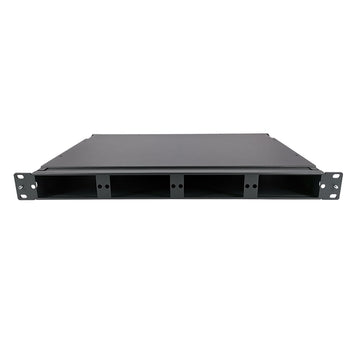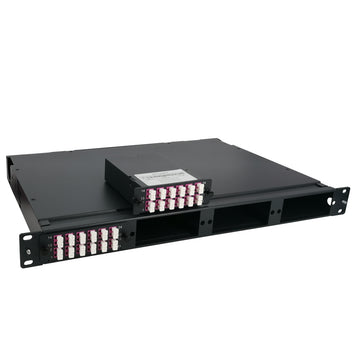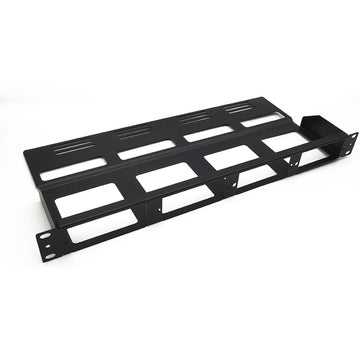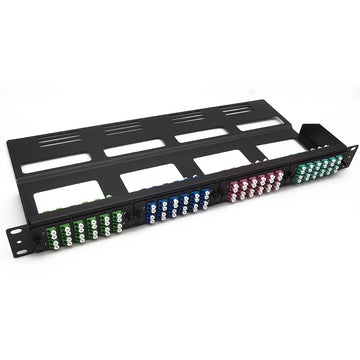Cat5e Termination and Cat6 Termination with RJ45 Keystone Jacks
Cat5e Termination and Cat6 Termination with RJ45 Keystone Jacks
Home network DIY is a trend in the IT world, and it is also worth trying by non-professionals. Maybe you've successfully run a cross-connect cable for a telecom network on your own by following some instructions online, or maybe you haven't. This "How To" article covers basic background information, required materials, and specific stamping techniques for Cat5e/Cat6 cabling. If you want to terminate a network cable (Cat5e cable or Cat6 cable) to a trapezoidal jack yourself, check out this easy-to-follow termination tutorial today.
What Is Keystone Jacks?
To terminate and install Cat5e/Cat6 keystone jacks on yourself, you have to be certain of every connection you make to ensure a reliable network. Before introducing the termination method and process, it's necessary to have some basic knowledge about the "keystone jack".
What is keystone jack? A keystone jack is a female connector used in data communications, particularly for local area networks (LANs), usually mounted in a wall plate or patch panel. T568A and T568B are the two wiring standards for an 8-position modular connector, permitted under the TIA/EIA-568-A wiring standards document. The only difference between T568A vs T568B is: that the orange and green wire pairs (Pair 2 & Pair 3) are interchanged. Both T568A and T568B wiring schemes are labeled for keystone jacks. The cat5e and cat6 wiring diagrams with corresponding colors are twisted in the network cabling and should remain twisted as much as possible when terminating them at a jack.
A principal advantage of keystone connectors is their versatility. Several types of keystone jack can be mounted on a single patch panel. They are available in unshielded and shielded forms and can accommodate cords and cables having various numbers of conductors. Each keystone jack is slightly different in how they are labeled and how the colors are arranged. The following are the three most commonly seen keystone jacks:

Cat5e and Cat6 Termination Guidance
Follow the below instructions step by step according to the wiring diagram, you'll find Cat5e or Cat6 wiring may look intimidating, turning out to be a piece of cake.
Step1
Insert the cable into the stripping tool to the required strip length. Strip off only as much cable jacket needed to properly terminate the pairs (1 to 1.5 inches should be sufficient to terminate pairs). Holding the cable near the tool, rotate the tool around the cable several times. Slightly bend the outer jacket and manually remove the cut piece or slide the cut outer jacket with the stripper.
Step2
Bend each pair in one direction to expose the ripcord, binder, or cross-web filler on the cable. Remove the ripcord, binder, or cross-web filler if they are present on the cable, leaving only the twisted pairs of wire. The cross-web filler should be cut as flush as possible to the jacket. Determine the wiring scheme and properly align all four cables accordingly on the jack. Keep the cable jacket as close to the connector as possible.
Note: Use connectors, wall plates, and patch panels that are compatible (same rating or higher) with the grade of the cable used.
Step3
Preserve the wire pair twists as close as possible to the point of termination. When connecting jacks and plugs, do not untwist the cable more than 0.5 inches for Cat5e, Cat6, and Cat6a cables. (FYI: A half of an inch of an untwisted wire pair results in 1.5 dB of near-end crosstalk.) Insert wires down into IDC terminal slots to position them before punching down and maintain the twist. Terminate all four pairs in the T568B wiring scheme for example.
Step4
When using a punch-down tool, make sure the tool is straight before punching down on the connector. Make sure the cut-side of the tool is facing outward. Inspect the connector to verify that the wires are fully engaged in the IDC terminals and are cut properly. Place a dust cover on the jack for protection.
Conclusion
As you can see, the steps for Cat5e and Cat6 cables termination of the network Ethernet cables are simple, but every single step should be handled with carefulness, otherwise, it will cause problems down the road. Have you acquired this skill after going through all the steps? In this tutorial, we have tried to make steps more intuitive and helpful for you.












